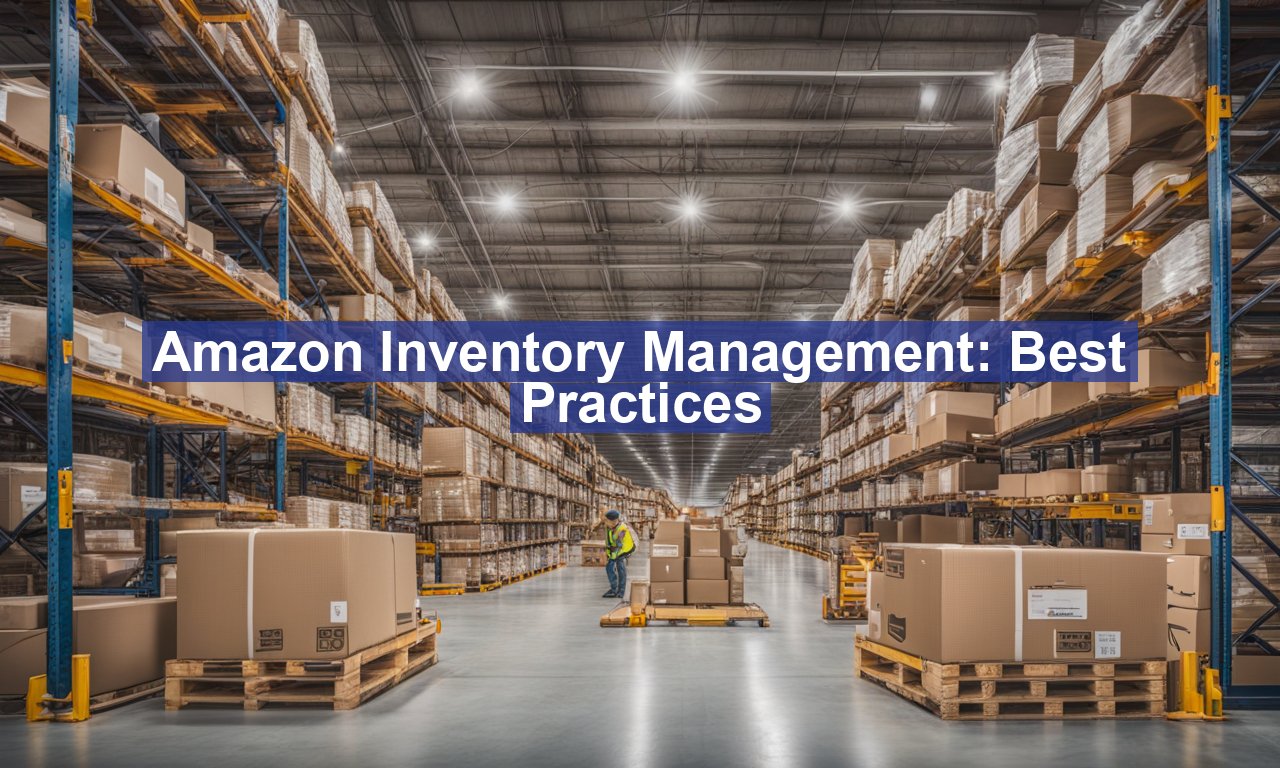Amazon inventory management: best practices, Imagine running out of stock on your best-selling product just as a promotional campaign kicks off on Amazon. That’s every seller’s nightmare, right? Whether you’re a small business or a large retailer, mastering inventory management on Amazon can mean the difference between a five-star success and a disappointing downfall.
This guide aims to illuminate the best practices that can streamline your Amazon inventory management, ensuring your stock levels are optimized, your costs are minimized, and your sales keep rolling in effortlessly.
The Importance of Efficient Amazon Inventory Management: Best Practices
First things first, let’s talk about why inventory management is the backbone of your Amazon seller success. Maintaining the right inventory levels is crucial to avoid stockouts that lead to lost sales and overstock that translates into increased holding costs. Plus, it directly influences your seller rating as customers are more likely to leave positive reviews when they receive their orders on time.
Moreover, Amazon’s algorithm favors sellers who keep their stores stocked adequately with fast-moving items, potentially boosting your visibility on this competitive platform. So, you see, inventory management isn’t just a mundane logistical task—it’s your secret weapon in maximizing profitability and enhancing customer satisfaction.
1. Utilize Amazon’s Built-In Tools
Amazon offers several built-in tools designed to make inventory management a breeze:
- Amazon Seller Central: This is your go-to dashboard for monitoring your inventory’s health. Use it to track stock levels and set up alerts for low inventory.
- Fulfillment by Amazon (FBA): Utilizing FBA, Amazon takes care of storage, packaging, and shipping for you. Not only does it ease the inventory burden, but it also offers Prime eligibility, boosting your product’s allure among Prime members.
These tools are perfect for those who are just starting or for sellers wanting to streamline their operations. For a deeper dive into utilizing Amazon’s resources, check out their official guide on Seller Central functionalities.
2. Forecast Demand Accurately
Forecasting demand is not about gazing into a crystal ball but relies on a scientific approach to avoid surplus or deficiencies in your inventory:
- Analyze Sales Trends: Review past sales data to identify popular items during certain seasons or events. This historical insight is crucial to making informed predictions.
- Consider External Factors: Keep an eye on market trends, and competitor activities, and be prepared for sudden spikes in demand.
- Use Inventory Management Software: Leverage software that incorporates AI and machine learning to predict future demand based on numerous variables. For reference, tools like Forecastlyare popular among Amazon sellers.
3. Optimize Your Reorder Point
Defining the right reorder point ensures you restock just in time to meet new orders without sitting on dead stock. Consider your lead time—the period between placing an order with your supplier and receiving it—and your average daily sales. By applying the following formula, you can determine your reorder point:
Reorder Point = (Lead Time in Days x Average Daily Sales) + Safety Stock
Safety stock acts as a buffer against demand surges or supply delays, keeping you secure during unforeseen circumstances.
4. Utilize Just-in-Time Inventory
The Just-in-Time (JIT) inventory method minimizes holding costs by receiving goods only as they’re needed in the production process. However, it requires a well-coordinated supply chain and effective communication with suppliers. It’s a risky but highly efficient strategy if properly implemented.
5. Manage Slow-Moving Inventory
No seller enjoys dealing with slow-moving inventory, however, these steps can help manage it effectively:
- Discount or Bundle Products: Offering bundles or discounts on slow movers can clear stock while still maintaining profitability.
- Improve Product Listings: Sometimes, all a product needs is an enticing description or better images to catch a buyer’s interest.
For additional strategies, this article on Shopify covers various methods to handle slow-moving inventory efficiently.
Conclusion
Efficient Amazon inventory management: best practices Management isn’t just about counting stock—it’s a dynamic process that involves forecasting, strategic planning, and keen market observation. By integrating Amazon’s internal tools with advanced demand forecasting software and maintaining a strategic reorder approach, you’ll not only keep your inventory in check but also enhance your overall business efficiency.
Remember, inventory management on Amazon goes beyond just making sure your products are in stock. It is equally about improving your reputation on the platform and proving to your customers that you are both dependable and professional. Adopt these best practices, and you’ll find that not only will your bottom line improve, but your operational stress will decrease significantly.


